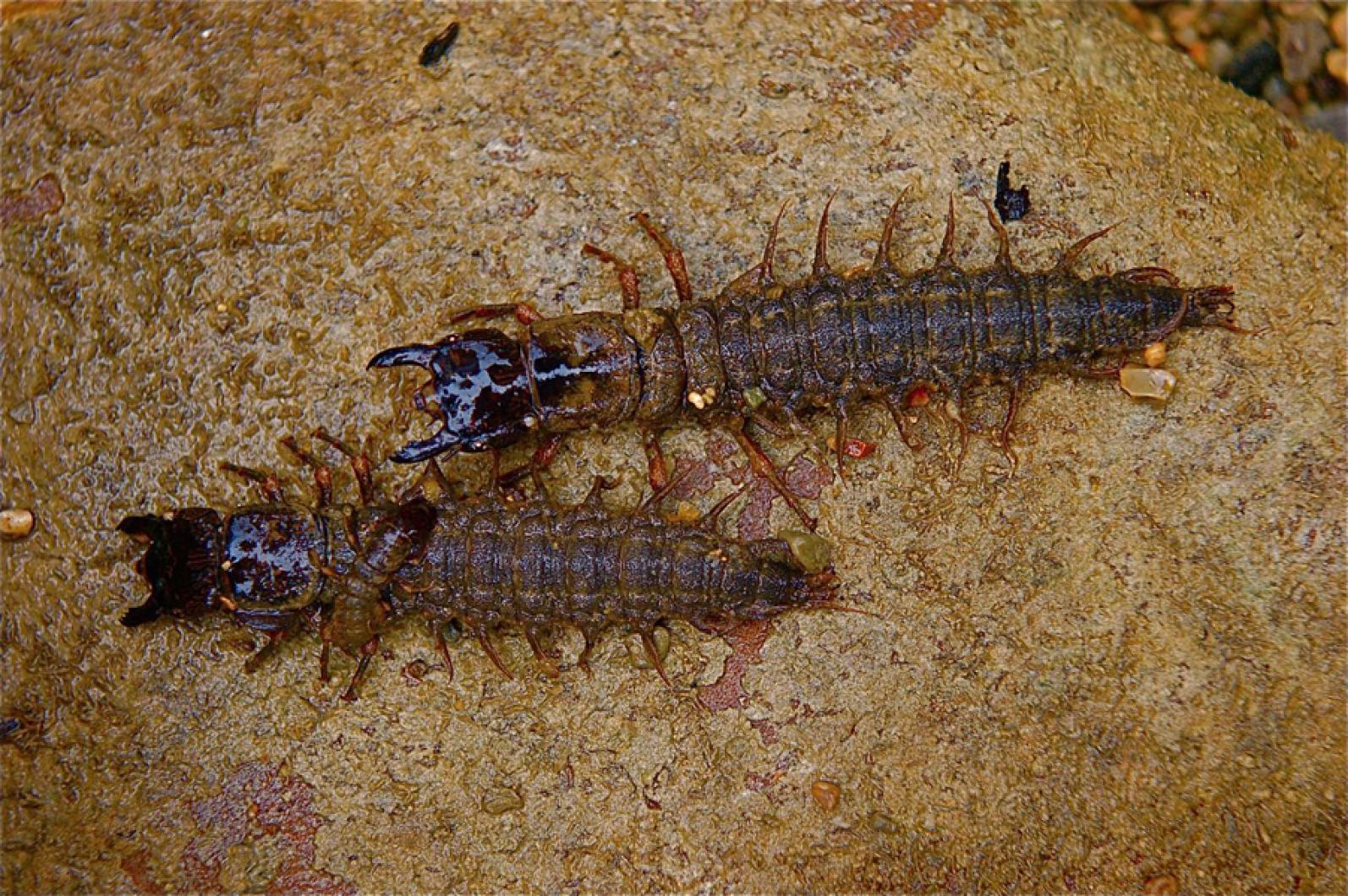Hellgramites prefer that you neither fish nor cut bait.
Either activity could lead to their demise. Hellgramites are the larval form of the dobsonfly, an aquatic freshwater insect that anglers know is a good bet and even better bait to catch bass or trout.
Finding hellgramites isn’t always easy. They require healthy, clean water and are a good indicator of water quality in freshwater ponds, rivers and streams. These predacious insects resemble caterpillars (or worms with legs) and hide on the pond bottom under rocks, coming out mainly to hunt and eat other insects and invertebrates. Also known as toe-biters, it would seem that they harass humans, too!
Most of the dobsonfly’s life is spent as a hellgrammite. For up to three years, this insect is in its larval form, but will pupate and metamorphose into a completely different adult form that can be seen flitting about as a dobsonfly in the summer.
These adults won’t be flying high, since they are very weak fliers, spending most of their life hovering near their natal pond or river. And a short life it is — dobsonflies live less than two weeks as adult insects.
Dobsonflies are an easily recognizable insect and even more menacing than their toe-biting larvae. As one of the largest aquatic insects in the US, they measure in at up to five inches long and give new meaning to the term “winging it.” Most of that length is the insect’s lacy wings, so it is no surprise that their scientific order, Megaloptera, means “large winged.” These wings lie folded over the insect’s body and can extend to be twice as long as the body. Although the wings are clear, a closer look shows them to be densely lined with intersecting dark veins.
Other telltale features of this particular species are their long, multisegmented antennae and unique, gender-specific mandibles: The male dobsonfly has long (up to one inch), impressive mandibles, which it uses to attract a partner and hold her during mating. The male’s bark could be said to be worse than his bite, because his mandibles can’t even penetrate skin or be used for any piercing purpose at all. The female, on the other hand, uses her small, sharp mandibles to bite and can even draw blood from an unsuspecting human.
Lucky for us, the dobsonfly is not venomous, though it will emit a foul-smelling anal spray as a defense. In a cruel twist of fate, these adults can’t take another bite (or a first bite, for that matter). These massive and mini mandibles are not used for munching, as the dobsonfly doesn’t eat during its adult stage.
Like the mythological figure Tantalus (from whom we derive the word “tantalize”), the adult dobsonfly’s fate is to be surrounded by edibles that it just can’t enjoy.
Find these primarily nocturnal insects in the evening (since they are often attracted to your porch light), and marvel at their wondrous wings and mesmerizing mandibles since they won’t be around for too long. Time flies, even if dobsonflies barely do, but they will make it — if nothing else — on a wing and a prayer.
Suzan Bellincampi is director of the Felix Neck Wildlife Sanctuary in Edgartown.




Comments (1)
Comments
Comment policy »